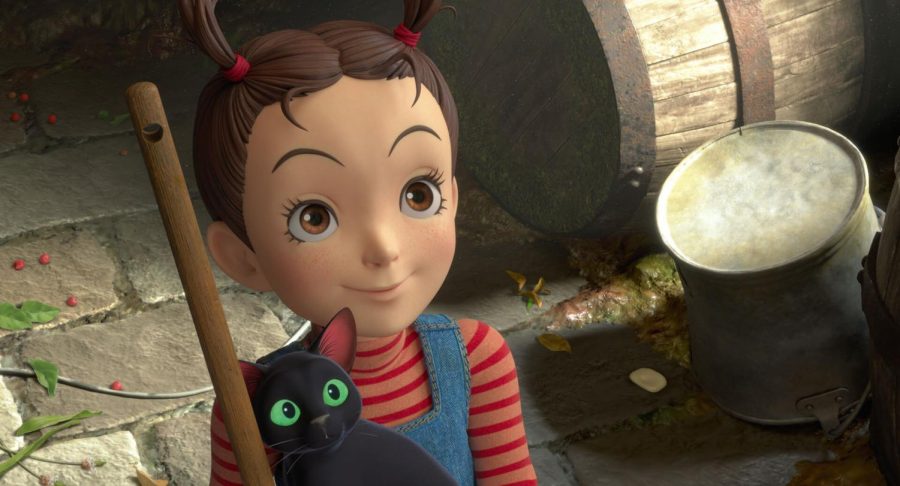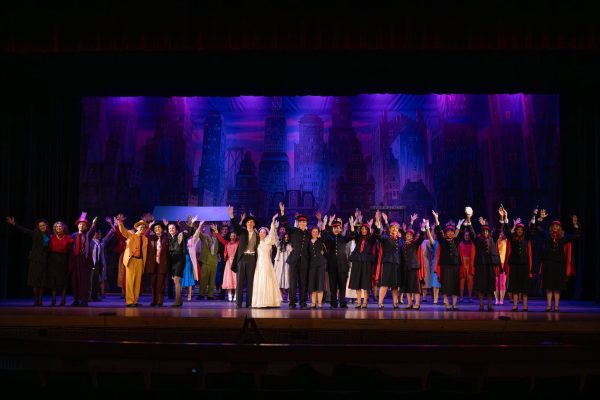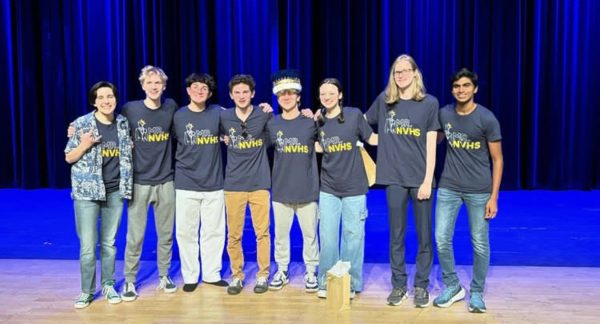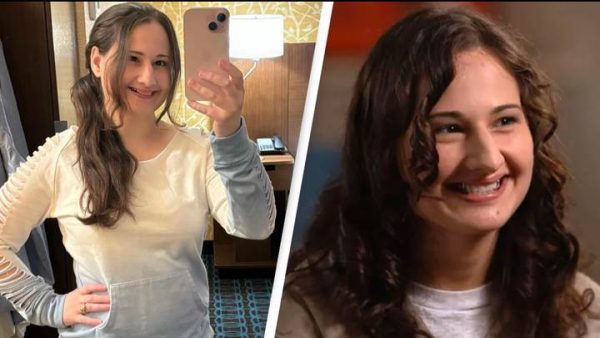Earwig and the Witch neglects Studio Ghibli’s legacy
A screencapture from Studio Ghibli’s “Earwig and the Witch”
Overall rating: 21/100
Gorō Miyazaki has a lot to live up to. His father, Hayao Miyazaki, founded Studio Ghibli in 1985 and is generally hailed as one of the greatest animators—if not the greatest animator—in the history of the medium. Learning that Gorō Miyazaki was supposedly reluctant to join the family business is telling; although his sophomore effort “From Up on Poppy Hill” received positive reviews, his debut “Tales from Earthsea” was generally considered Ghibli’s worst film. This title has now been claimed by “Earwig and the Witch,” which was recently released on HBO Max.
Ghibli is a name in the filmmaking world that immediately creates an image in people’s minds: witches and magical creatures, luscious scenery and whimsical worlds alongside meticulous hand-drawn animation. Their animation is arguably what’s gotten them to their current status; every time you watch a film from the studio, you know that it’ll be an astonishing visual experience. In an industry that’s dominated by CGI films that are churned out yearly and are often made with profit in mind, their works are unparalleled products of laborious effort and painstaking care.
When Ghibli halted production in 2014, after releasing Hiromasa Yonebayashi’s “When Marnie Was There,” it seemed as if the end of an era had come. Isao Takahata, one of the founders of the studio, passed away in early 2018, and Hayao Miyazaki had retired after releasing “The Wind Rises” in 2013. Six long years passed without any releases from the studio, and fans were finally blessed with news of a new movie in June of 2020.
However, there was one detail in the announcement that immediately shocked everyone: “Earwig and the Witch” was going to be the first computer-animated film from the studio. Of course, trying a new form of animation is never a bad thing, but many people saw this news and feared that this marked the end for hand-drawn animation. News flash: it didn’t. Hopefully, Ghibli has learned its lesson by now and will return to hand-drawn animation.
“Earwig and the Witch” starts with an intriguing scene involving a car with a mouth chasing a woman who can conjure worms from a strand of her hair, before jumping years into the future and following our protagonist, Erica, the child the woman being chased leaves at an orphanage after escaping from the car. Erica likes her life at the orphanage and has no intention of leaving, but one day, a mysterious couple arrives and adopts her. Against her wishes, Erica is taken to her new home, where she learns that her new mother, Bella Yaga, is a witch who needs extra hands around the house. Also in the house is a creature named the Mandrake, who can perform magic.
There are so many different aspects of the film that fill me with irrational anger, but I suppose I’ll just get the obvious out of the way. “Earwig and the Witch’s” CG animation is nothing short of appalling, even considering that it’s a movie that was made for TV. The issue isn’t in the textural details or the character design—those things are perfectly fine. The main reason this film is as insufferable as it is is because of how soulless it feels.
There isn’t a single character in this film that doesn’t feel like a hollow puppet; although, I’m accepting of that since I dislike Erica. For a character that’s so blatantly trying to recreate Kiki of “Kiki’s Delivery Service,” she couldn’t be less likable. Her sole motivation throughout the whole film is to get Bella Yaga and the Mandrake under her thumb and become the queen of the house, just like she did with everyone in the orphanage. The film even goes as far as to give her a talking black cat named Thomas which is such a horrible attempt at recreating Jiji (the feline companion in “Kiki’s Delivery Service”) for a multitude of reasons: his introduction to the film is hastily done, the only thing he really does is say jokes that never land and also, just his name. Thomas? Really? It’s a magical talking black cat; he should at least have a name that sounds more fun than Thomas.
Another aspect of the film that annoyed me the more I thought about it is the score. This film was made without the old crew members that had worked on Ghibli’s previous productions, which means that some of the composers, like Joe Hisaishi, were absent. What we’re left with is a score that’s inoffensive and unremarkable, which makes it infuriating. Films like “Kiki’s Delivery Service,” “My Neighbor Totoro” and “Spirited Away” have scores that are breathtaking and have sometimes even moved me to tears. I couldn’t tell you what the score for this film was if I tried because it’s that forgettable—the only thing I remember is the film’s main theme song, “Don’t Disturb Me” (which I still only remember that first lyric of and nothing more).
All of these critiques pale in comparison to this film’s greatest weakness: this is a film about nothing. Once our main trio of characters arrives at their house, the narrative collapses. The majority of this film is Erica doing chores for Bella Yaga, which is such a mind-numbingly dull experience that by the time the film feels like it should just be beginning, any sense of investment has completely dissipated (it’s worth mentioning that the film’s runtime is only 82 minutes long). There is no structure for the story whatsoever, and since the plot barely exists, the “climax” and “ending” are genuinely incoherent. Even the most magical parts of this film come off as uninteresting, mainly because the aforementioned CG animation makes the world seem like a cheap plastic dollhouse. After it ended, I got up and started to pace around my room just because of how furious I was.
What makes this worse is that there are still trademarks of other Ghibli films found within “Earwig and the Witch.” There are shots of food, facial expressions and character movements that resemble other Ghibli movies, but none of them work. The only possible merit that I can think of is that the voice actors don’t do a horrible job of bringing whatever life and personality they can to these characters. The Mandrake also has a few moments that managed to briefly distract me from the rest of the trainwreck that was happening on the screen. It brings me no pleasure to have this much contempt for a film from Ghibli, but I can’t think of anything else that I enjoyed here. The only instance in which I recommend you watch this is if you’re on a quest to watch every Ghibli film. Otherwise, avoid this film at all costs.
Your donation will support the student journalists of Neuqua Valley High School. Your contribution will allow us to print our next newspaper edition as well as help us purchase equipment and cover our annual website hosting costs.







